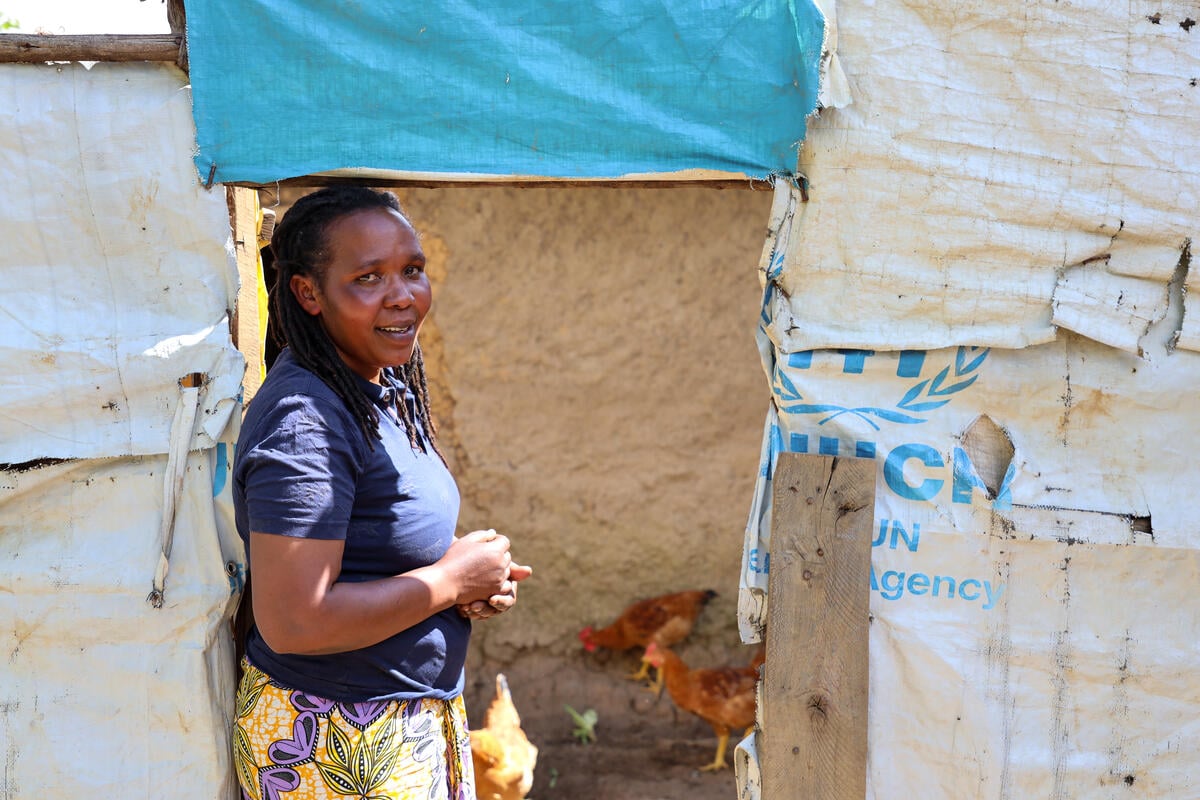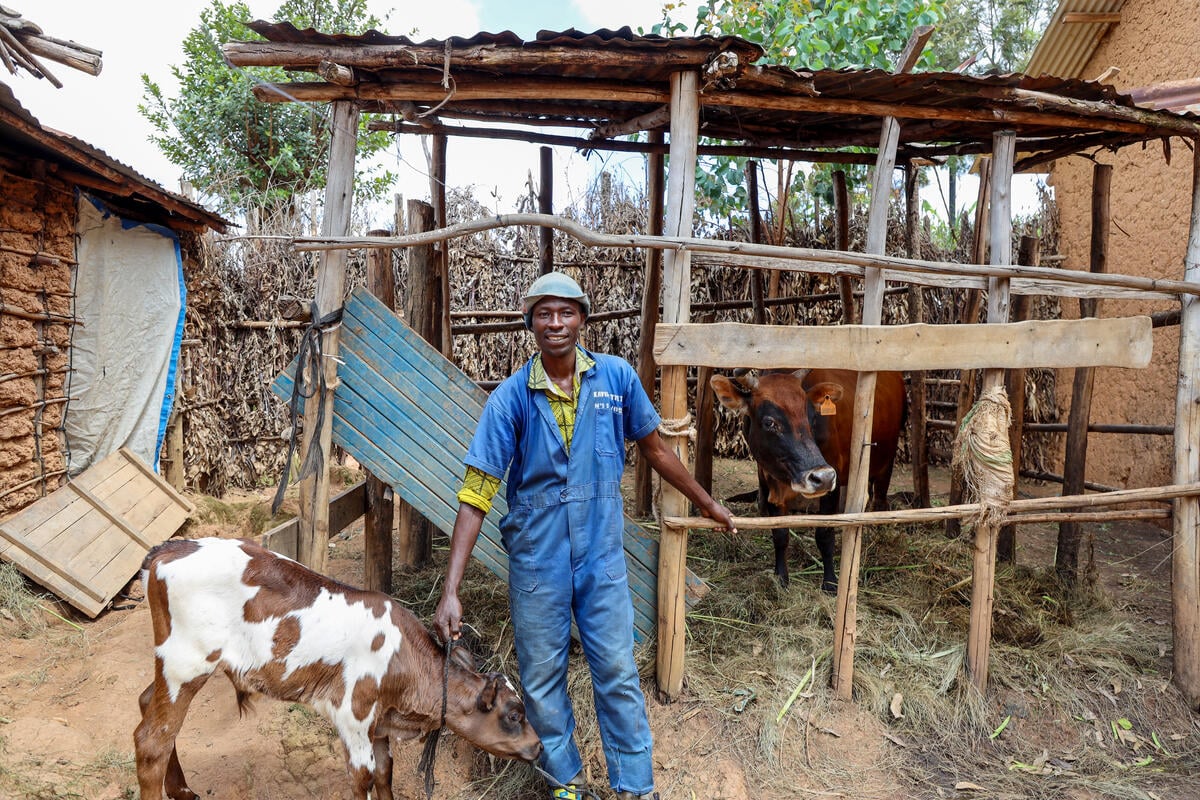By Sajjad Malik

The latest SDG report shows that the world has experienced the most significant poverty increase in three decades stemming from economic pressures due to COVID-19, the war in Ukraine, and climate-related disasters (among others). The UN estimates that as many as 670 million people, or 8.4% of the global population, now live in extreme poverty.
Studies confirm that the world’s poorest suffered the most. Refugees in particular are acutely affected by poverty. Along with these global shocks, humanitarian needs are rising as new conflicts erupt, and existing ones remain unresolved. Unprecedented funding shortages have forced aid agencies to reduce humanitarian food and other basic assistance to forcibly displaced populations in Bangladesh and Tanzania, among others.
Even as UNHCR and partners provide immediate life-saving assistance, we are keeping up efforts and investments in employment and economic opportunities for refugees. Doing so builds their resilience and potentially reduces the negative impacts of extreme poverty on other SDGs such as health, food security, education, and gender-based violence.
Another critical piece of work that we are sustaining is generating data on refugee poverty as guided by Indicator 2.2.2 of the Global Compact on Refugee. This data is one of the better tools through which UNHCR, our partners, and development banks can make informed decisions and maximize the use of limited resources to the benefit of refugees and host communities.
According to the data available across eight countries, forcibly displaced individuals consistently experience higher poverty rates than nationals of the host countries. In seven countries, more than half of refugees live below the poverty line.
Where data was available, refugee populations tend to experience higher poverty rates than the nationals. Displaced individuals consistently experienced higher poverty rates than the nationals (Figure 1). The data shows that refugees are disproportionately affected by poverty and thus require dedicated support.
Refugee children fare the worse
UNICEF estimates that children worldwide are twice as likely to live in poverty than adults. Among refugee populations, UNHCR together with economists from RICE University and University of Geneva GSEM estimates that refugee children are up to three times more likely to be poor than adults, and as many as two out of three children of refugees are extremely poor in Kenya and Uganda.
Children make up to 41% of all refugees by the end of 2022, and millions continue to be displaced by extreme weather events. It is therefore crucial to urgently address poverty among refugee children to ensure their health and well-being are met.
Refugees who live in countries that allow them to work are less poor
In upper-middle and high-income countries, the poverty rate of refugees compared to nationals seems to be lower than the same likelihood in low and lower-middle-income countries. The current evidence shows that Venezuelan refugees who live in countries that allow them to work – Brazil, Chile, Colombia, and Costa Rica – have lower poverty rates than other refugee groups with more restrictive access to employment.
Figure 1: Comparative poverty rates, 2018-2022

Source: Based on Global Compact on Refugees Indicators Report 2023, UNHCR
Supporting the economic resilience of refugees is a central piece of the global effort to meet the SDGs
Global analysis of poverty trends by the World Bank shows that in high-income countries, fiscal policies were able to fully offset the impact of COVID-19 on poverty. However the ability of fiscal policy to protect welfare during crises is limited in low-income countries. Fiscal policies offset barely a quarter of the impact in low-income and lower-middle-income countries, while they nearly fully offset the impact of COVID-19 on poverty in high-income countries. With over three-quarters of refugees living in low- and middle-income countries, despite UNHCR rapidly expanding cash to just under $1 billion last year,[1] spending on social protection and assistance in refugee-hosting countries remains inadequate.
Enabling refugees’ access to formal labour markets and expanding direct transfers to refugee households during times of crisis is essential to redress the disproportionate impact of poverty on refugee households, especially on children.
Yet, many countries do not provide refugees the right to work and thus limit their ability to support themselves. Allowing refugees to work and integrate with the local economy is a critical component of the international effort towards finding solutions.
As we look forward to welcoming delegates to the second Global Refugee Forum this December, we face the harsh reality that humanitarian needs are far outpacing demand and in most cases, refugees needs are consistently higher than the support provided.
In this complex world of growing displacement, we need to also continue documenting and monitoring poverty among refugees and nationals to better target humanitarian and development assistance.
This will also allow us to generate more evidence on what happens when refugees are allowed to work and move freely. So far, the evidence shows it can unlock economic opportunity, reduce poverty, and improve lives for both refugees and hosts.

[1] In 2022, UNHCR’s total expenditure on cash-based interventions was USD $969.2M in over 100 countries.
